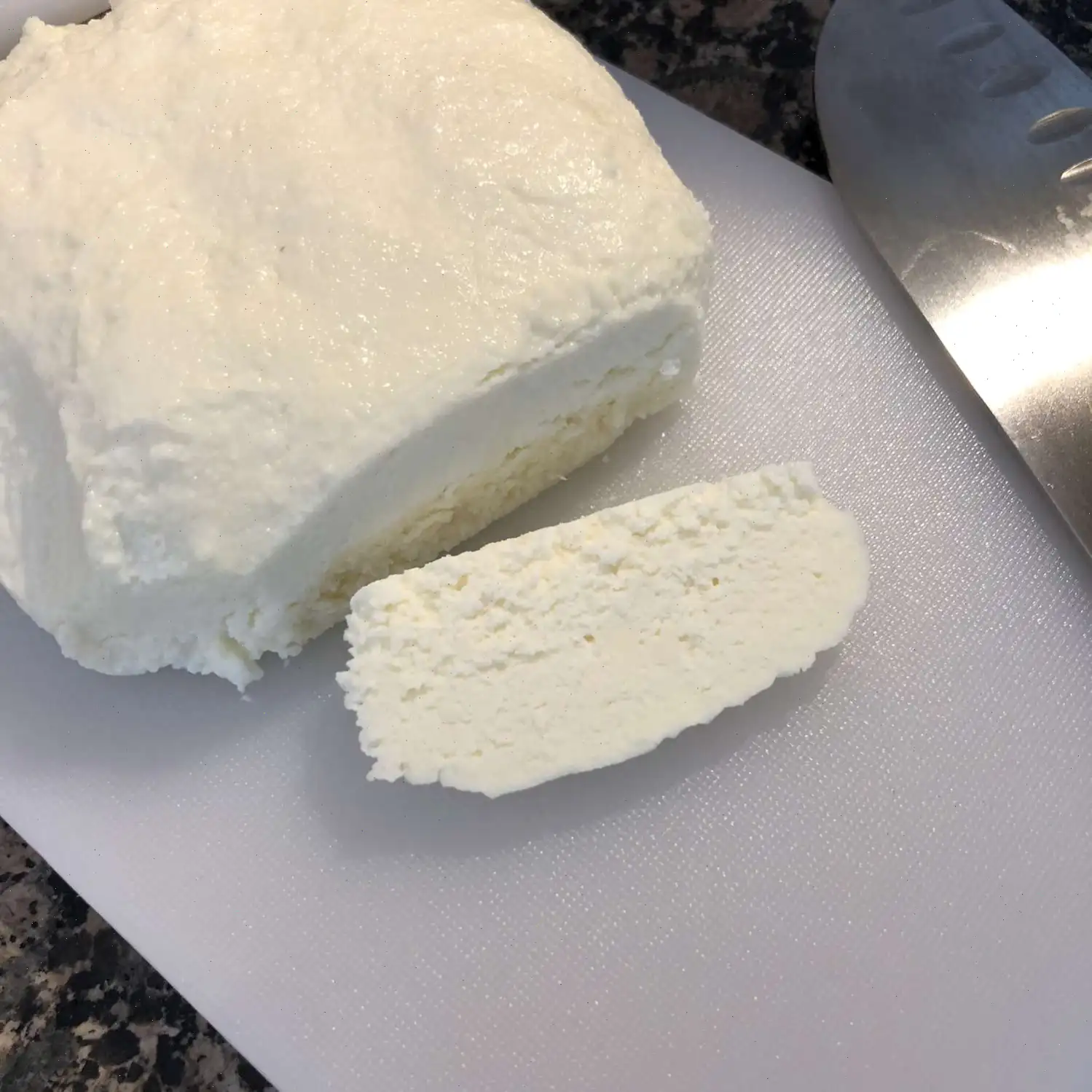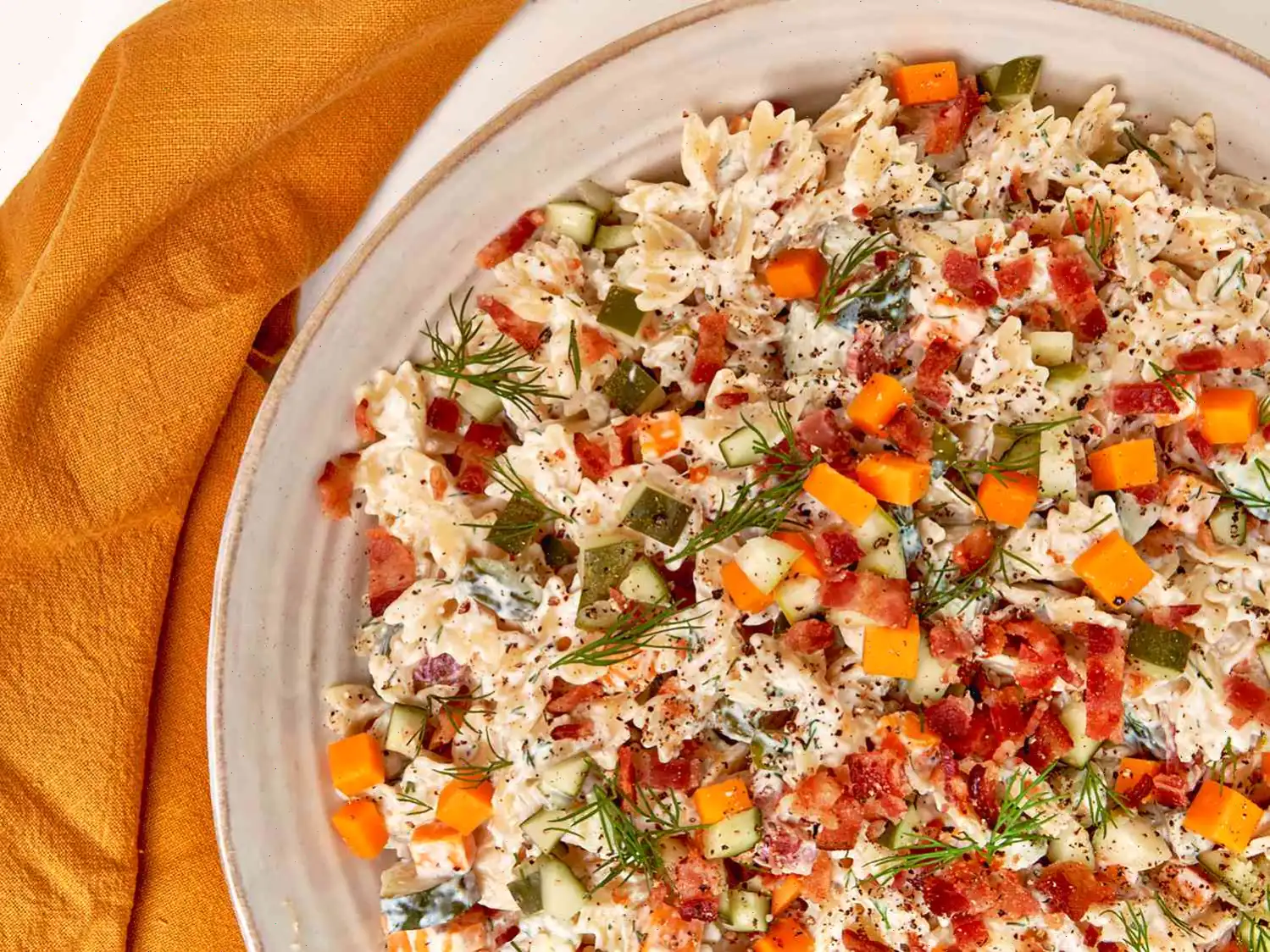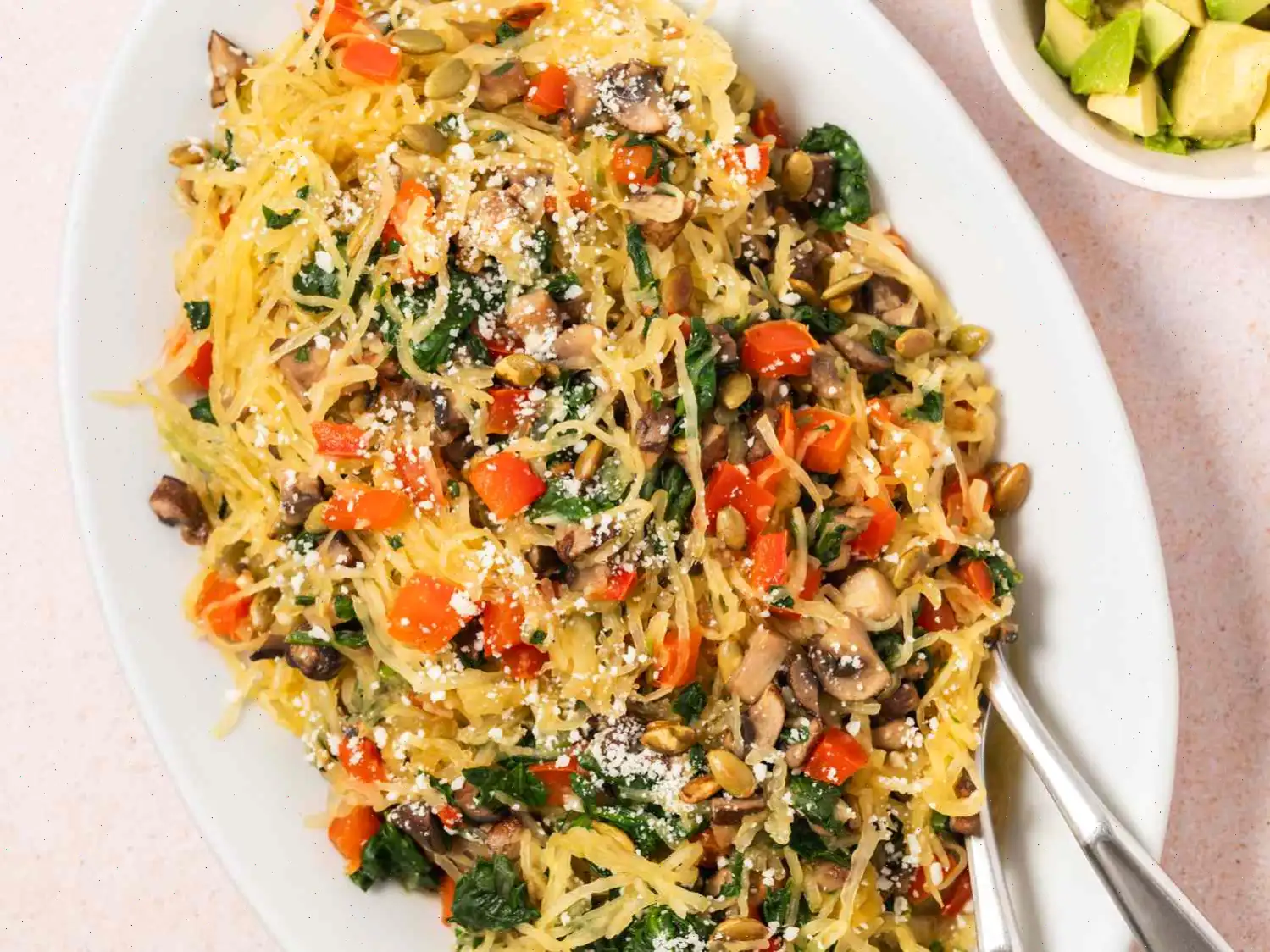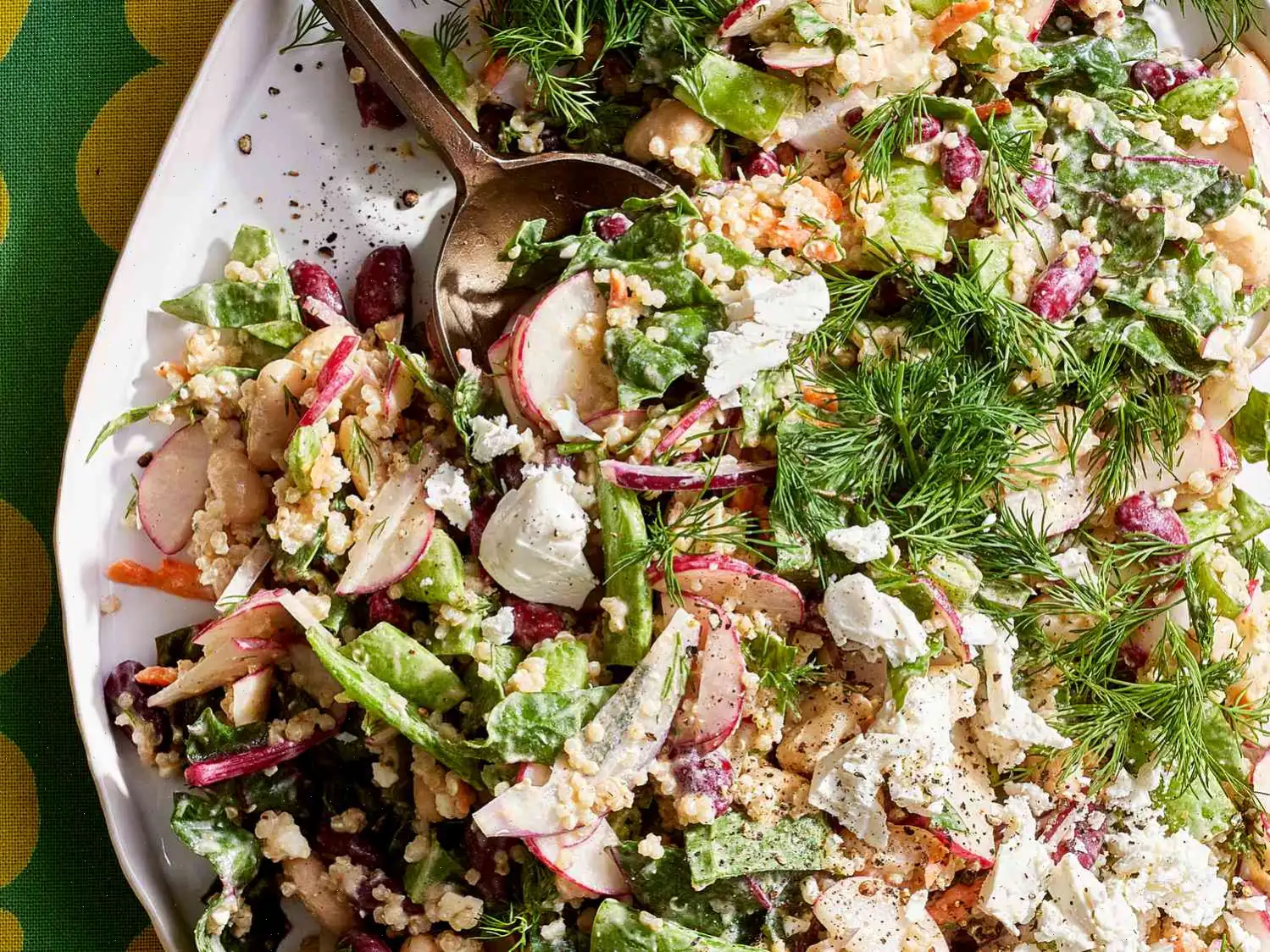
Paneer Recipe
This recipe yields 6 servings.
Ingredients
- 1 gallon milk
- 1 quart buttermilk
- 1 cup canola oil for frying
Directions
Step 1: Pour the milk into a large pot and bring it to a boil over medium heat. Keep a close eye on it to prevent it from overflowing.
Step 2: Once the milk begins to boil, gradually pour in the buttermilk while stirring continuously. The milk will begin to separate into curds and whey.
Step 3: Line a colander with cheesecloth. Carefully pour the milk mixture into the colander, saving some of the strained liquid. Allow it to sit for about 2 hours until the curds have settled and the dripping stops.
Step 4: Transfer the strained curds into a food processor. Process until the mixture is smooth and can be formed into a ball. If the mixture feels too dry, add some of the reserved liquid and process again. The texture should be similar to firm ricotta cheese.
Step 5: Turn the cheese out onto a clean surface and knead it until smooth. Form it into a ball and wrap it in plastic wrap. Refrigerate it until you're ready to use it.
To Cook Paneer
Step 6: Heat the canola oil in a large, heavy skillet over medium-high heat.
Step 7: Cut the paneer into bite-sized cubes. Fry the pieces in the hot oil until they turn a pale golden brown, which should take about 1 minute.
Step 8: Remove the fried paneer from the skillet and place it on a paper towel-lined plate to drain any excess oil.
Nutrition Facts (per serving)
- Calories: 421
- Fat: 18g (23% DV)
- Saturated Fat: 10g (48% DV)
- Cholesterol: 58mg (19% DV)
- Sodium: 437mg (19% DV)
- Carbohydrates: 38g (14% DV)
- Total Sugars: 38g
- Protein: 27g (53% DV)
- Vitamin C: 3mg (3% DV)
- Calcium: 946mg (73% DV)
- Iron: 0mg (2% DV)
- Potassium: 1217mg (26% DV)
* Percent Daily Values are based on a 2,000 calorie diet. Your daily values may be higher or lower depending on your calorie needs.
** Nutrient information is not available for all ingredients. Amounts are based on available nutrient data. If you are following a medically restrictive diet, consult your doctor or dietitian before preparing this recipe.

Paneer is a fresh, soft cheese that plays a vital role in Indian cuisine. It is made from just two ingredients: milk and buttermilk, and is known for its versatile nature. Whether it's incorporated into rich curries or grilled as part of a snack, Paneer is a key ingredient in both traditional and modern Indian dishes.
Origin and History of Paneer
The origins of Paneer date back thousands of years, with traces of its use found in ancient Indian texts. Though it is often associated with Indian cuisine, Paneer is thought to have been introduced to the subcontinent through Central Asia. Similar cheeses, such as the Persian 'panir,' were made using the same method of curdling milk with an acidic agent. Over time, Paneer became widely adopted in the Indian subcontinent, especially in regions with a strong vegetarian tradition. Its ability to absorb spices and its mild flavor made it a perfect addition to rich, flavorful dishes like Saag Paneer and Shahi Paneer.
Regional Variations
While Paneer is commonly used throughout India, regional variations exist that shape its preparation and usage. In North India, Paneer is often served in thick, creamy curries, while in the South, it might be used in lighter, tangier dishes. In Gujarat and Maharashtra, Paneer is frequently deep-fried or added to sweets, such as Sandesh. In Punjab, it plays a starring role in Paneer Tikka, a popular grilled snack. The method of making Paneer can also vary: while some regions use lemon juice or vinegar to curdle the milk, others use buttermilk, as in this recipe, to achieve a softer, creamier texture.
What Sets Paneer Apart?
Unlike other cheeses such as mozzarella or ricotta, Paneer does not melt when heated. This property makes it ideal for cooking in dishes that require the cheese to hold its shape, such as curries or kebabs. Additionally, the texture of Paneer is firmer than most fresh cheeses, yet it remains soft and tender. Another unique characteristic of Paneer is that it is made without rennet, making it a popular choice for vegetarians. Its high protein content and low fat make it a nutritious option for many.
Where is Paneer Typically Served?
Paneer is most commonly found in Indian restaurants and homes across the globe. In India, it is served as part of main dishes, such as Paneer Butter Masala or Palak Paneer, or as an appetizer in the form of Paneer Tikka. It also makes an appearance in street food, where it may be grilled or fried and served in wraps or with chutneys. Outside of India, Paneer has found its place in the international vegetarian and vegan communities, with many non-Indian restaurants offering Paneer-based dishes as a meat alternative.
Interesting Facts about Paneer
- Paneer is a staple in many vegetarian diets across India, where it is used to replace meat in dishes.
- It is incredibly easy to make at home, requiring only milk and an acidic ingredient like buttermilk or lemon juice.
- The process of making Paneer is simple, yet it involves careful attention to temperature and timing to achieve the perfect texture.
- Because Paneer does not melt, it can be cooked at high temperatures without losing its shape or flavor.
- In some parts of India, Paneer is believed to have medicinal benefits, such as aiding in digestion and boosting energy levels.
Whether you enjoy it in a rich curry or grilled as part of a flavorful appetizer, Paneer is a timeless ingredient that continues to be loved by people across the world. Its mild taste, rich texture, and ability to absorb spices make it an indispensable part of Indian cooking and beyond.
FAQ about Paneer Recipe
Comments
Eric Turner
06/16/2023 12:56:08 PM
Absolutely loved this recipe! Normally I prepare paneer with just milk and lemon juice, but decided to give this recipe a try to add more flavor, and it did not disappoint. Doubling the recipe was a success, and adding 2 tsp. of salt during cooking enhanced the taste even more. Although I was uncertain if the curds and whey were separating properly, I saved it by adding extra lemon juice and hot water towards the end. The cheese turned out beautifully in the end. I skip the kneading or processing step and instead, squeeze out the cheese in cheesecloth with all my strength, before pressing it between plates to remove excess water. I then place the plates under a heavy cast iron Dutch oven for several hours. The result? Many compliments on the cheese I made for a palak paneer dish at a family gathering. Thank you for sharing this fantastic recipe!
Mark Thomas
01/04/2024 09:24:57 AM
This recipe has some shortcomings. It fails to specify whether the mixture should continue to be heated after adding the buttermilk. Despite following the instructions precisely to prevent the milk from boiling over, the result still showed surface ripples and released a lot of steam. Adding the buttermilk only produced a minimal amount of curds, merely a handful. Faced with the prospect of a pot of wasted milk, I resorted to Googling 'paneer troubleshooting' and salvaged it by adding the juice of two lemons, which quickly curdled it. Furthermore, the cheese lacks salt, which could greatly enhance its flavor profile.
Joyce Baker
12/29/2024 03:22:25 PM
I had some difficulty initially with getting the curds to form properly. However, after coming across a tip about using white vinegar, I was able to separate the whey from the curds much more easily. After rinsing the cheese in cold water to remove any remaining whey and vinegar, I ended up with a beautifully smooth paneer after around 6 hours. I had previously attempted using buttermilk and lemons without much success, but this method proved to be much more effective. I did decide to add a bit of salt to enhance the flavor as well.
Tyler Walker
09/28/2024 06:26:21 PM
The flavor was acceptable, but the consistency was not right.
Maria Hernandez
01/15/2025 07:31:15 AM
Simple and straightforward!







